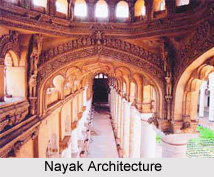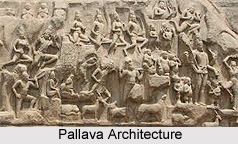 Tamil Nadu is considered to be very much older than North India. As per the geological time scales North India and the Himalayan ranges appeared on the globe recently. Tamil Nadu is said to exist as part of the continent that linked Africa and Australia together even before that. It was called `Lemuria` or `Kumarik Kandam`.
Tamil Nadu is considered to be very much older than North India. As per the geological time scales North India and the Himalayan ranges appeared on the globe recently. Tamil Nadu is said to exist as part of the continent that linked Africa and Australia together even before that. It was called `Lemuria` or `Kumarik Kandam`.
Origination of Tamil Nadu
It is believed that the first man originated somewhere in this continent and later the race might have migrated to various parts of the world. The Tamils or the Dravidians are therefore regarded to be one of the earliest races of the world. Several prehistoric tools and weapons and burial sites have been discovered in various parts of Tamil Nadu.
Tamil Nadu in Sangam Era
Sangam age in Tamil Nadu is considered to be the earliest known period of Tamil history, when organised life and history of the inhabitants existed. But still there is confusion regarding the exact date. It is sometimes considered to be pre-Aryan, non-Aryan and probably goes back to 4000 B.C. The first, second and third Sangams flourished during this period and the Tamil poets of these `Sangams` or Academies produced numerous literary works. Only a few anthologies are now available in printed form although most of them have been lost. Various historical elements like the everyday life of the people of those times and also their culture, polity and social set-up are revealed from these works. Three kingdoms named the Pandyas, Cheras and Cholas ruled Tamil Nadu. Earlier, Chera kingdom is now the modern Kerala state. The Pandyas ruled the south and the Cholas the north of Tamil Nadu. The Sangam Age is considered to be the Golden Age of Tamils.
Post Sangam Era in Tamil Nadu
During Post Sangam period, the Tamil country was dominated by an alien race called the `Kalabras`, which is considered to be a dark period for the region. At this time, the Tamil region became full of chaos and confusion and as a result instability arouse. The historians could not provide much evidence of this period.
 Pallavas in Tamil Nadu
Pallavas in Tamil Nadu
After this period, the Pallavas came into rule the Tamil country and they reigned for over two centuries from 600 AD to 800 AD. Even though they were also of foreign origin yet during their rule stability was retained, peace prevailed and a lot of constructive works were done. The Pallavas made Kanchipuram their headquarters and started offering patronage to art, architecture and literature experts. The Pallavas also first started in the history of Tamil Nadu building rock temples. It was a break through in the construction of temples, which were till then, built with wood, bricks and mud. Even today, these rock-cut temples can be seen in their spotless beauty in various places. The Pallava period extended Buddhism, Jainism, Vaishnavism and Saivism and then came Islam and Christianity. In this way, a secular seed of tolerance was sown in Tamil Nadu and places of worships of all of them flourished. Nowadays, one can find monuments and temples of all sorts throughout Tamil Nadu.
Cholas of Tamil Nadu
The Cholas came into rule after the Pallava period. They ruled the Tamil country from 9th century A.D. to 13th century A.D. A clean administration was provided by them and people were also free from worries. The Cholas were great conquerors and builders of great temples. During the Chola reign, art, architecture, literature and spiritualism flourished widely. The specialty of this period was the art of metal casting and bronze icons. The most remarkable product of the Chola period was the icon of the cosmic dancer `Nataraja`, the presiding deity of Chidambaram Temple.
Pandyas in Tamil Nadu
In the early 14th century, the Pandyas removed the Cholas from power of Tamil Nadu for a brief period. The Khiljis invaded the south and the Pandya capital was sacked during this period, and a sultanate was formed which was destroyed by the rise of the Hindu Vijayanagar Empire. The Vijayanagar Empire helped to preserve temples and deities from being razed by the iconoclastic rage of the Mohammedans. They prevented the spread of the Muslim rule south of Tungabadra river. Their governors also renovated most of the temples damaged by the earlier Muslim invaders.
Vijaynagar Empire in Tamil Nadu
The `Raja Gopuram` or the tall temple towers at the threshold of the temples of Tamil Nadu were the main characteristic feature of the Vijayanagar temples. The contribution of the Vijayanagar Empire in the history of Tamil Nadu is very significant. Their role to temple architecture was substantial and a valuable addition to those already done by the Pallavas, Cholas and the Pandyas. After the fall of the Vijayanagar Empire, the Nayakas continued to rule for a long period. The Tamil Nadu had seen the impact of the rise of the Marathas, who ruled for a brief period in Thanjavur and its neighbourhood.
Medieval era of Tamil Nadu
Tamil Nadu came under the Muslim rule of the Nawabs of Arcot . But, then the Europeans tried to establish their supremacy in Tamil Nadu and the British Empire was founded. They established the first presidency at Madras in Tamil Nadu. India became independent on 15th August 1947 and the British rule was ended in Tamil Nadu also.






